Theorists proposed an idea they called quantum teleportation—a means of transferring the identity of one particle to another over some distance.


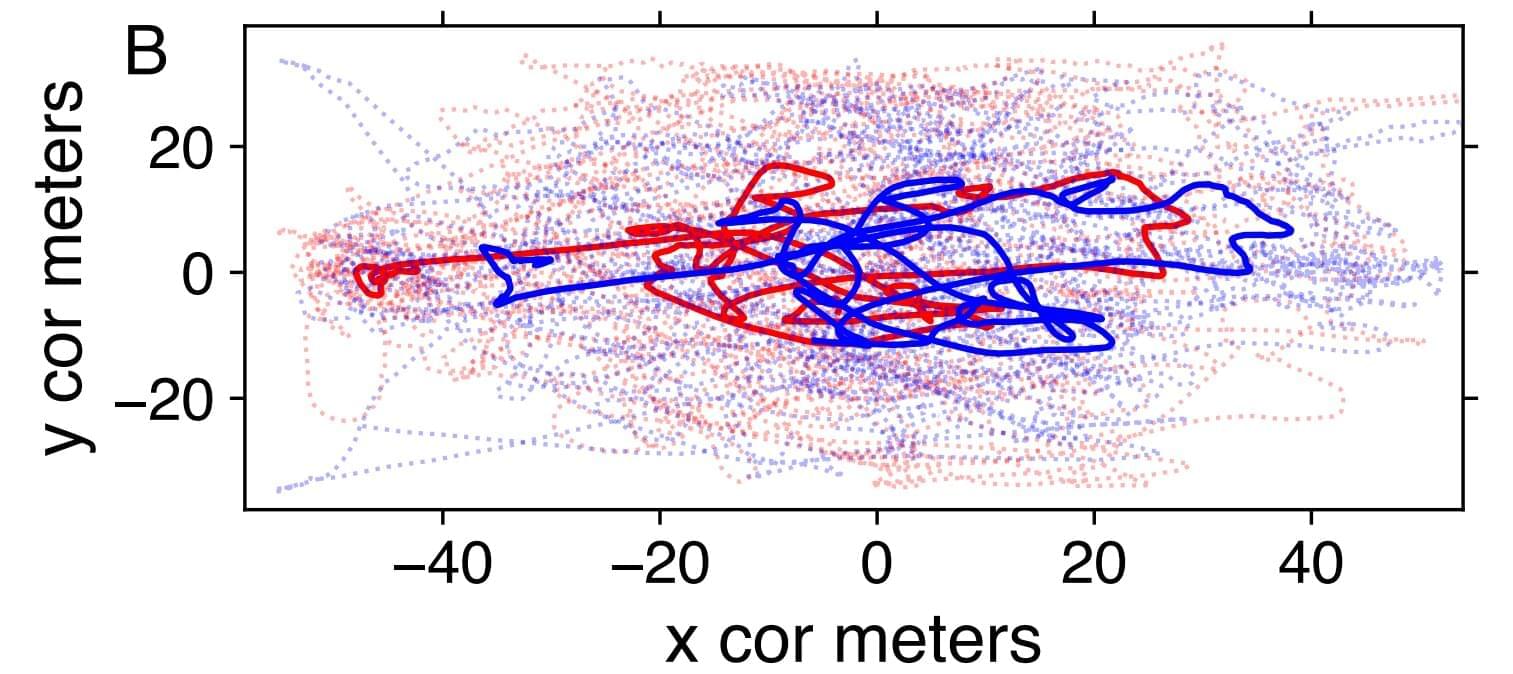
What do albatrosses searching for food, stock market fluctuations, and the dispersal patterns of seeds in the wind have in common?
They all exhibit a type of movement pattern called Lévy walk, which is characterized by a flurry of short, localized movements interspersed with occasional, long leaps. For living organisms, this is an optimal strategy for balancing the exploitation of nearby resources with the exploration of new opportunities when the distribution of resources is sparse and unknown.
Originally described in the context of particles drifting through liquid, Lévy walk has been found to accurately describe a very wide range of phenomena, from cold atom dynamics to swarming bacteria. And now, a study published in Complexity has for the first time found Lévy walk in the movements of competing groups of organisms: soccer teams.
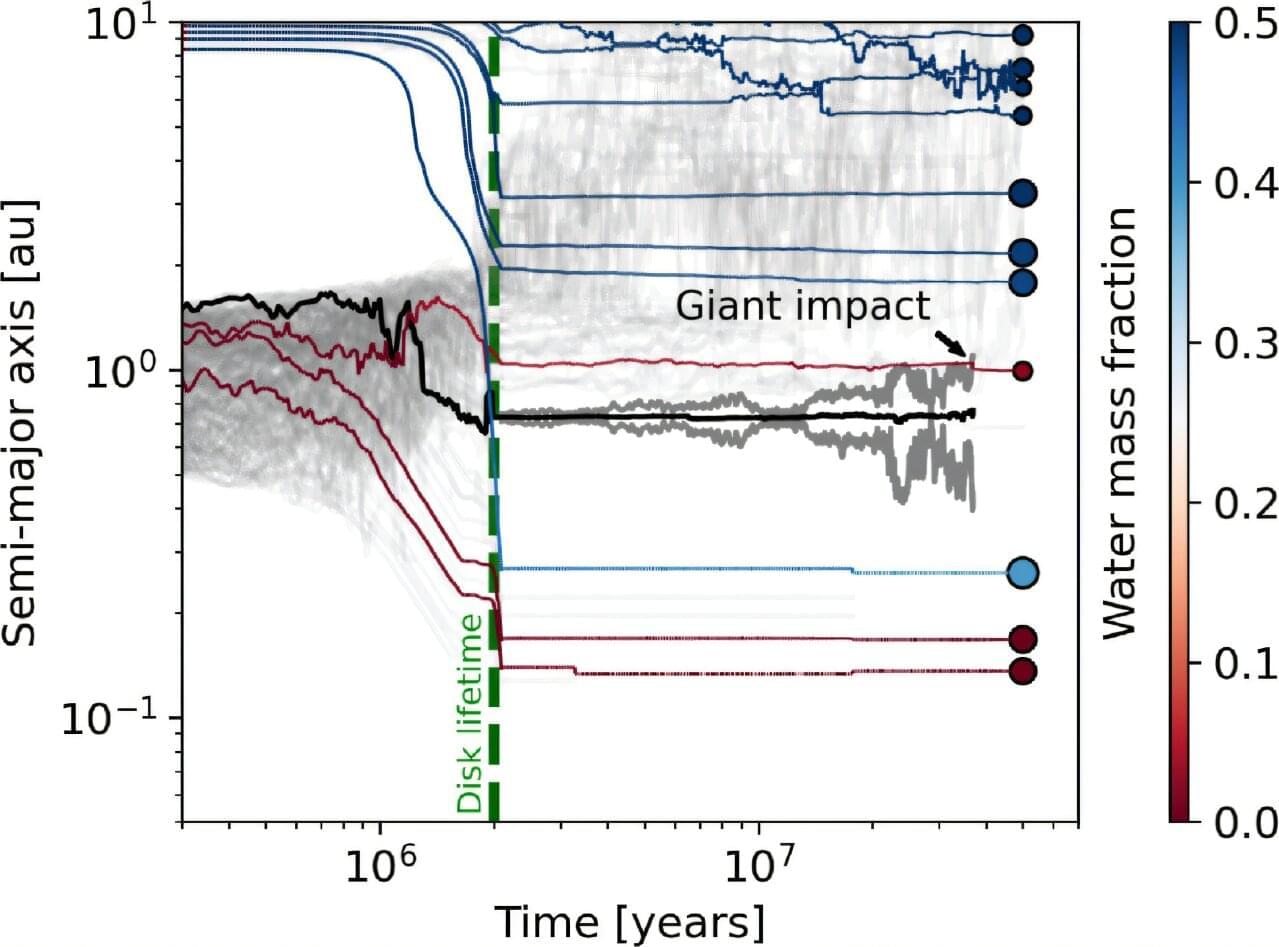
A new study by Rice University researchers Sho Shibata and Andre Izidoro presents a compelling new model for the formation of super-Earths and mini-Neptunes—planets that are 1 to 4 times the size of Earth and among the most common in our galaxy. Using advanced simulations, the researchers propose that these planets emerge from distinct rings of planetesimals, providing fresh insight into planetary evolution beyond our solar system. The findings were recently published in The Astrophysical Journal Letters.
For decades, scientists have debated how super-Earths and mini-Neptunes form. Traditional models have suggested that planetesimals—the tiny building blocks of planets—formed across wide regions of a young star’s disk. But Shibata and Izidoro suggest a different theory: These materials likely come together in narrow rings at specific locations in the disk, making planet formation more organized than previously believed.
“This paper is particularly significant as it models the formation of super-Earths and mini-Neptunes, which are believed to be the most common types of planets in the galaxy,” said Shibata, a postdoctoral fellow of Earth, environmental and planetary sciences. “One of our key findings is that the formation pathways of the solar system and exoplanetary systems may share fundamental similarities.”
Astronomers have revealed new evidence that not just one, but four tiny planets are circling around Barnard’s Star, the second-nearest star system to Earth.
The four planets, each only about 20 to 30% the mass of Earth, are so close to their home star that they zip around the entire star in a matter of days. That probably means they are too hot to be habitable, but the find is a new benchmark for discovering smaller planets around nearby stars.
The resulting paper is published in The Astrophysical Journal Letters.

A research team led by Prof. Jiang Changlong from the Hefei Institutes of Physical Science of the Chinese Academy of Sciences has developed an innovative dual-mode sensing platform using upconversion nanoparticles (UCNPs). This platform integrates fluorescence and colorimetric methods, offering a highly sensitive and low-detection-limit solution for bilirubin detection in complex biological samples.
The findings, published in Analytical Chemistry, offer a new technological approach for the early diagnosis of jaundice.
Jaundice is a critical health issue in neonates, affecting 60% of newborns and contributing to early neonatal mortality. Elevated free bilirubin levels indicate jaundice, with healthy levels ranging from 1.7 μM to 10.2 μM in healthy individuals. Concentrations below 32 μM typically don’t show classic symptoms. Rapid and accurate detection of bilirubin in neonates is critical.
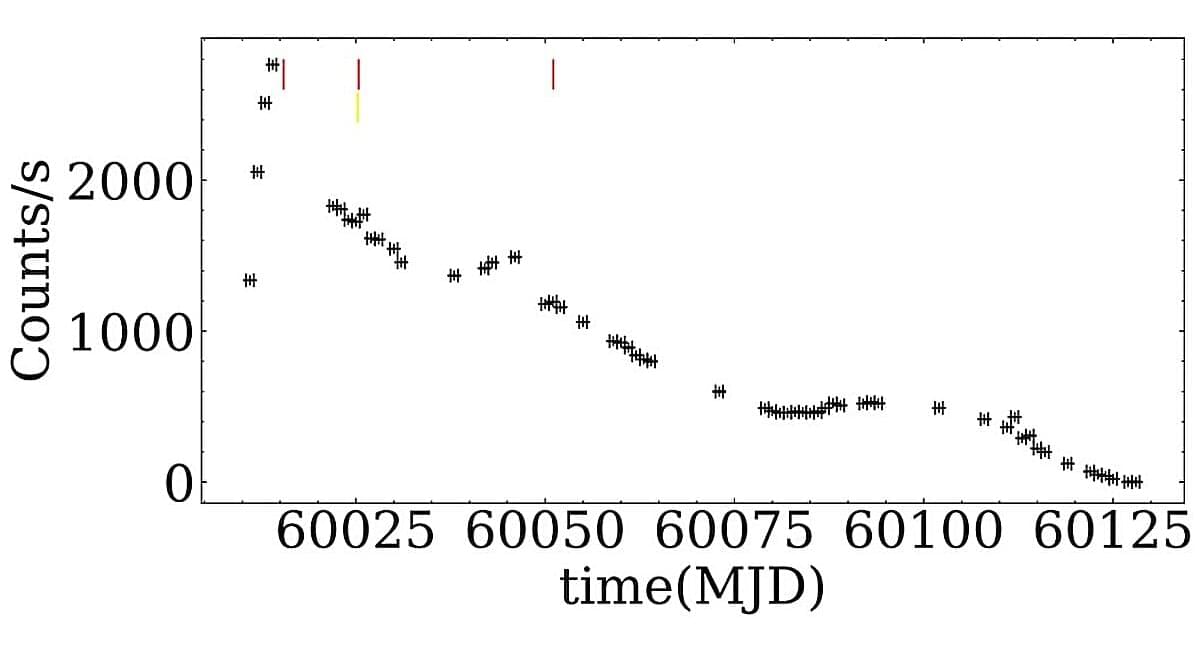
Chinese astronomers investigated the spectral and temporal properties of a black hole X-ray binary system known as SLX 1746-331, during its recent outburst. Results of the study, published in The Astrophysical Journal Letters, could help us better understand the nature of this system and its behavior.
X-ray binaries are composed of a normal star or a white dwarf transferring mass onto a compact neutron star or a black hole. Based on the mass of the companion star, astronomers divide them into low-mass X-ray binaries (LMXBs) and high-mass X-ray binaries (HMXBs).
SLX 1746-331 is a transient black hole LMXB at a distance of about 35,200 light years, discovered in 1985. After a 13-year-long period of quiescence, it entered an outburst in 2023, which peaked on March 14.

Chapman–Enskog theory has long provided an accurate description of the transport properties of dilute gas mixtures. At elevated densities, revised Enskog theory (RET) provides a framework for describing the departure of the transport properties from their dilute-gas values. Various methods of adapting RET for the description of real fluids have been proposed in the literature. The methods have in common that they incorporate one or more length scales to describe molecular interactions. With few exceptions, the required length scales have been estimated from experimental transport property data. In this work, we introduce two transfer lengths that describe the residual transport of momentum and energy. We derive a model called the exchange-weighted closest approach (EWCA), which links the transfer lengths to the intermolecular potential. Combining the EWCA model with Mie potentials fitted to experimental equilibrium properties yields accurate predictions for several real fluids, including a binary mixture. At higher temperatures, the theory is accurate at surprisingly high densities, even up to the liquid–solid transition of argon. We demonstrate how the transfer lengths can be computed from experimental data or correlations for the transport properties. The transfer lengths obtained in this manner are in good agreement with those obtained from the EWCA model paired with an accurate ab initio potential for argon. The results suggest that kinetic theory, after further developments, can become a predictive theory also for liquids.
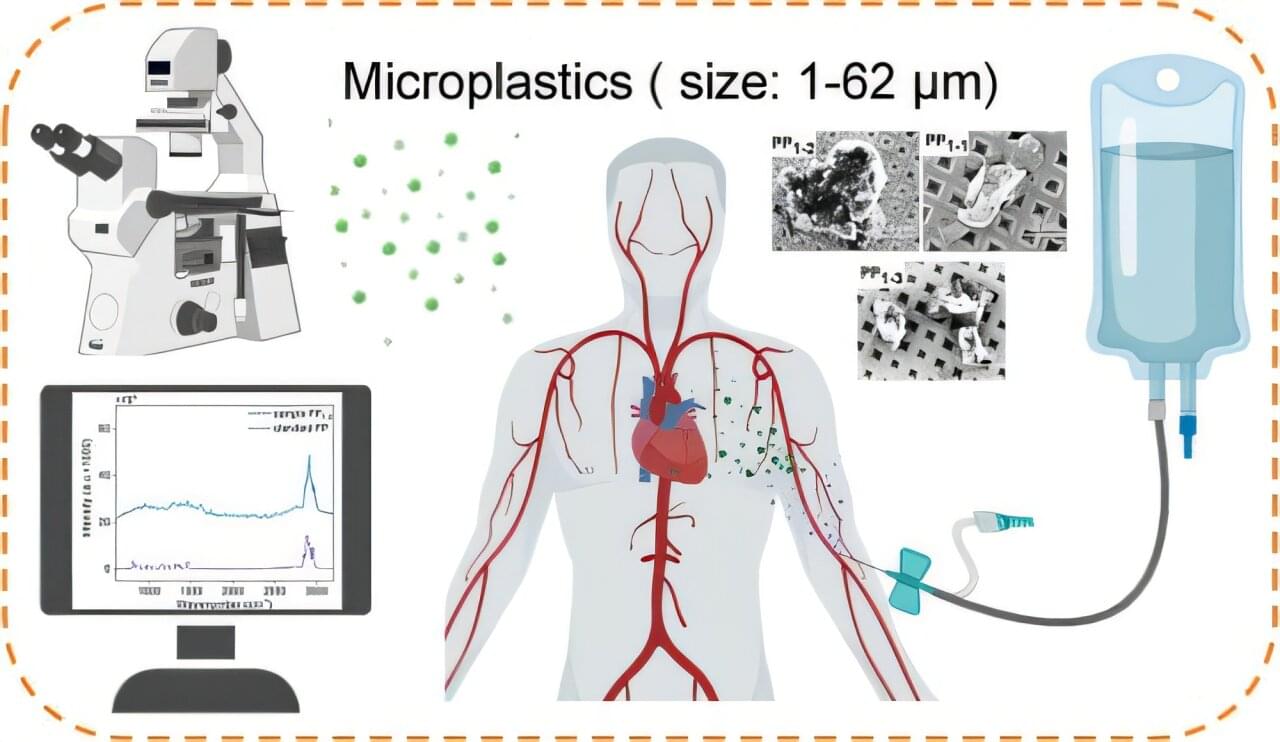
Microplastics have been found almost everywhere that scientists have looked for them. Now, according to research published in Environment & Health, these bits of plastic—from 1 to 62 micrometers long—are present in the filtered solutions used for medical intravenous (IV) infusions. The researchers estimate that thousands of plastic particles could be delivered directly to a person’s bloodstream from a single 8.4-ounce (250-milliliter) bag of infusion fluid.
In clinical settings, IV infusions are packaged in individual plastic pouches and deliver water, electrolytes, nutrients or medicine to patients. The base of these infusions is a saline solution that contains filtered water and enough salt to match the content of human blood. Research from the 1970s suggests IV fluid bags can contain solid particles, but few scientists have followed up on what those particles are made of.
Researchers Liwu Zhang, Ventsislav Kolev Valev and colleagues suspected that these particles could be microplastics that—upon infusion —would enter the recipient’s bloodstream and potentially cause negative health effects. So, they set out to analyze the types and amounts of particles in commercial IV fluid bags.

Density functional theory (DFT) is a cornerstone tool of modern physics, chemistry, and engineering used to explore the behavior of electrons. While essential in modeling systems with many electrons, it suffers from a well-known flaw called self-interaction error. A recent study has identified a new area where a correction for this error breaks down.
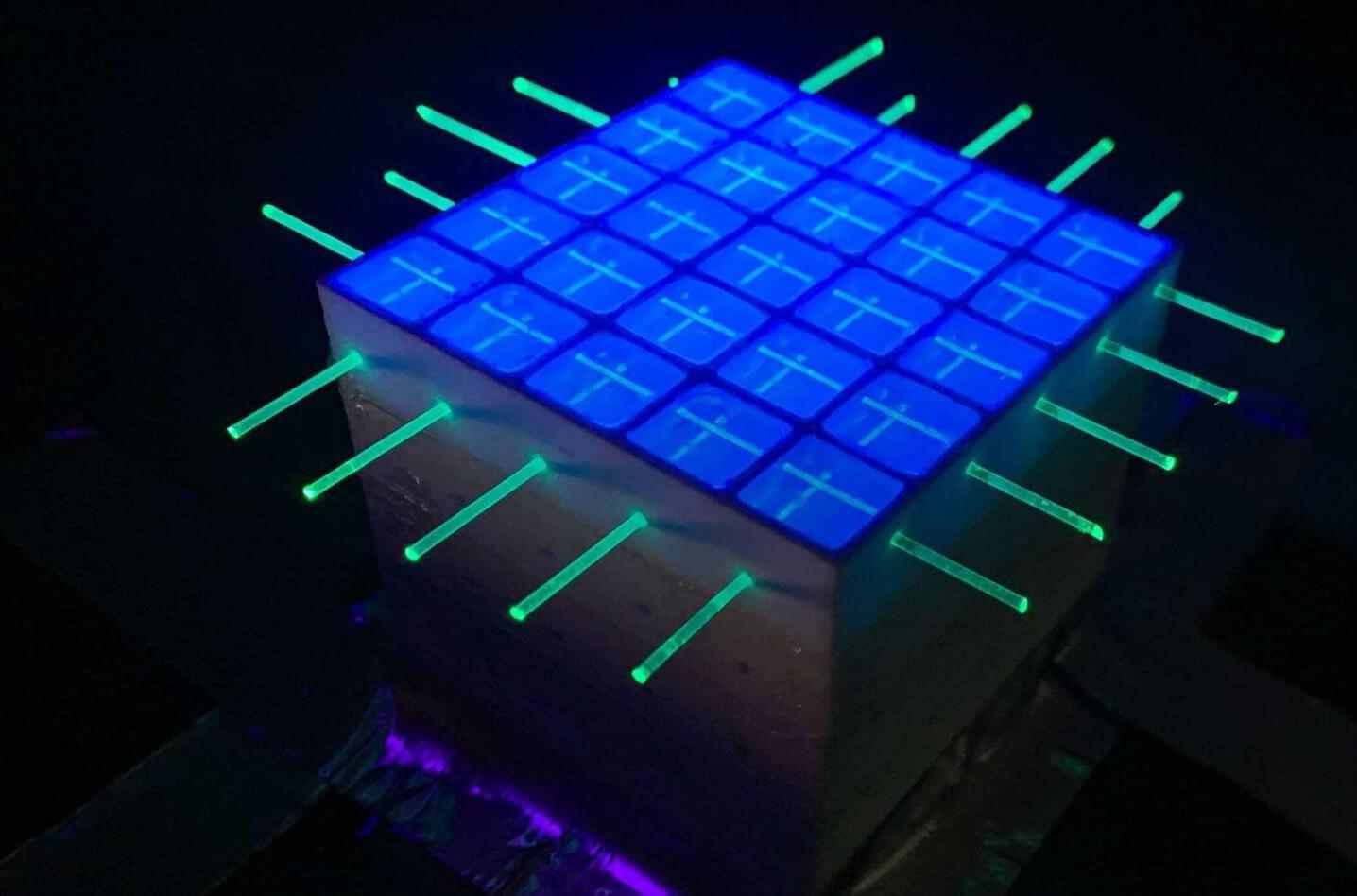
An international collaboration headed by researchers in the Department of Physics has shown that additive manufacturing offers a realistic way to build large-scale plastic scintillator detectors for particle physics experiments.
In 2024, the T2K Collaboration started to collect new neutrino data following several upgrades to the experiment that included new types of detectors. One of these, called SuperFGD, has a mass of about 2 tons of sensitive volume and is made of approximately two million cubes. Each cube is made of plastic scintillator (PS) material that emits light when a charged particle passes through it.
Neutrinos carry no charge, as their name indicates, but they sometimes interact with other particles, then produce electrons, protons, muons or pions that can be detected. Each PS cube is traversed by three orthogonal optical fibers that collect the scintillation light and guide it to 56,000 photodetectors. The data reveal three-dimensional (3D) particle tracks, which in turn allow researchers to learn more about neutrinos.